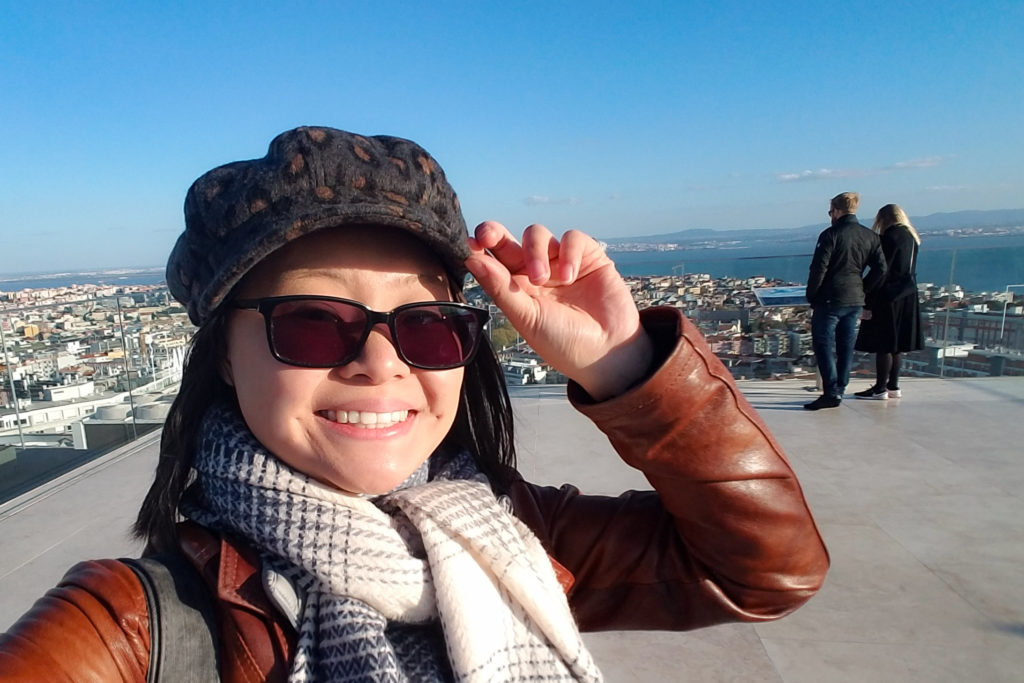One thing I’ve learned to appreciate during my semester abroad is the opportunity to not only learn things firsthand through field trips in the city, but also to apply what I learn in class to new experiences outside the city.
This is the case with Immigration, Race, and Identity in Contemporary Italy, a political science class that has taken me to places as close as downtown Rome, under 30 minutes away on the Metro, and as far away as Lisbon, a three-hour flight from Fiumicino airport.
I went to Lisbon for an academic excursion in the middle of November with not only Professor Rinelli and my classmates from Immigration, Race, and Identity in Contemporary Italy, but also with Professor Bordignon and her Contemporary Politics of Europe class. We took a bus to the airport on Thursday evening and flew to Lisbon.

We arrived late that night, ate at an American(!) diner (well, what better way to welcome a group of American students than with some American cuisine?), and checked into our hotel. I fell asleep instantly and was ready to see the city the next morning.
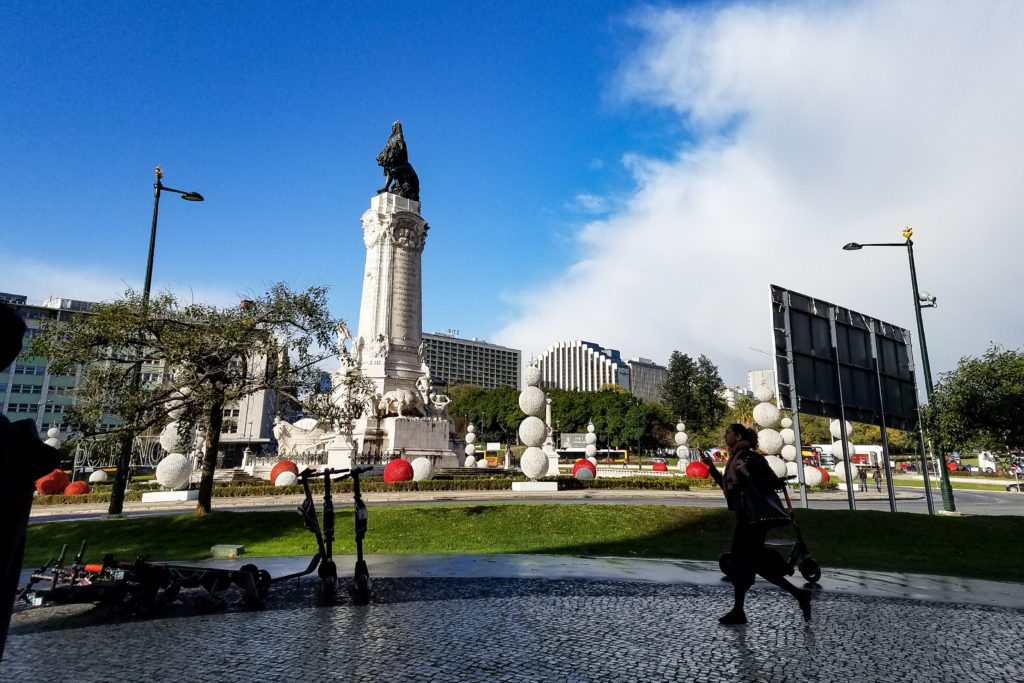
After breakfast at the hotel, our professors gave us 24-hour passes for the Lisboa Metro. We used them at a Metro station close to the hotel and switched to another train before we got to our destination: the coast.
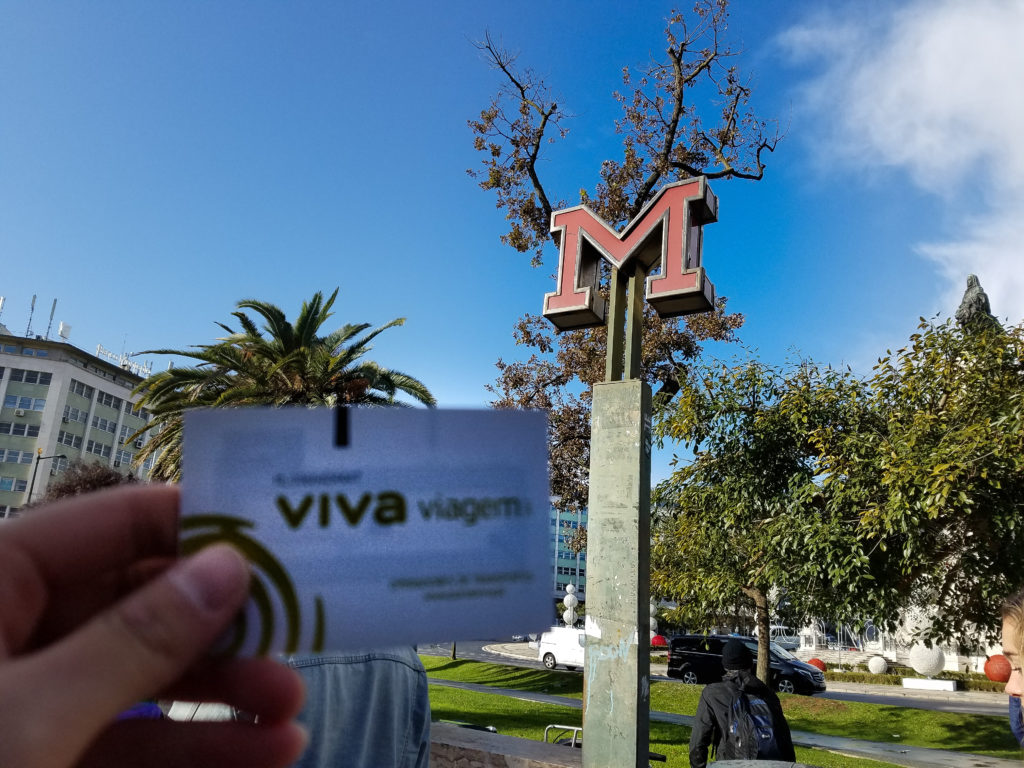
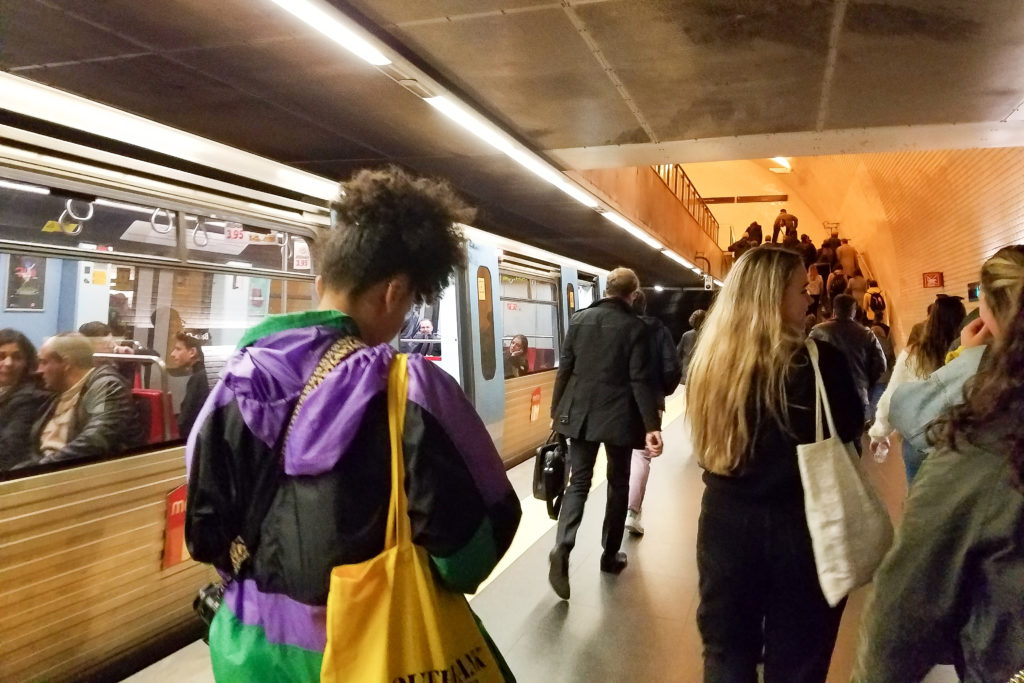
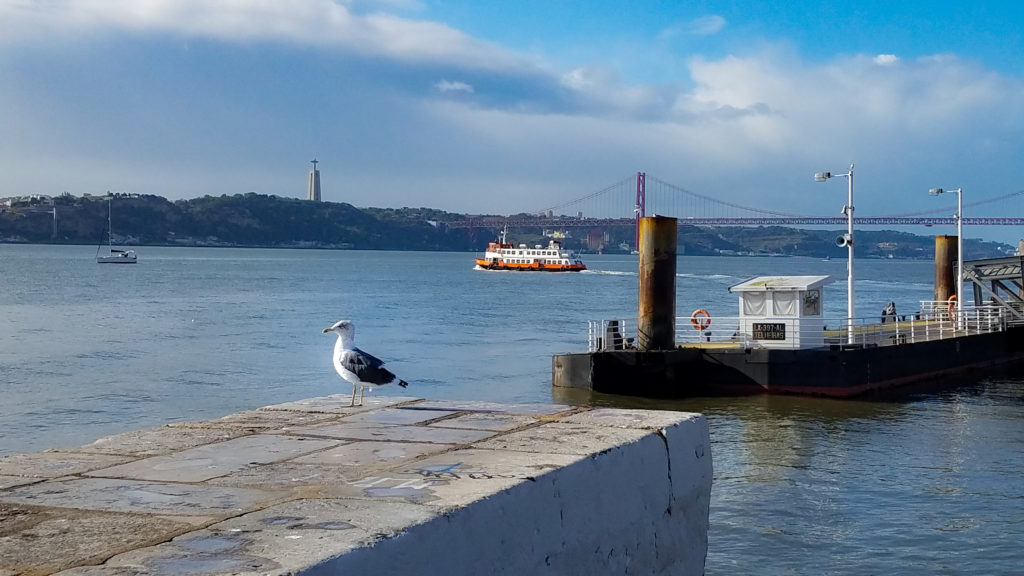
After some ooh-ing and ahh-ing at the sight of the shore (and at a bridge in the distance, which looks exactly like the Golden Gate Bridge in San Francisco), we continued on our visit to the European Maritime Safety Agency (EMSA for short).
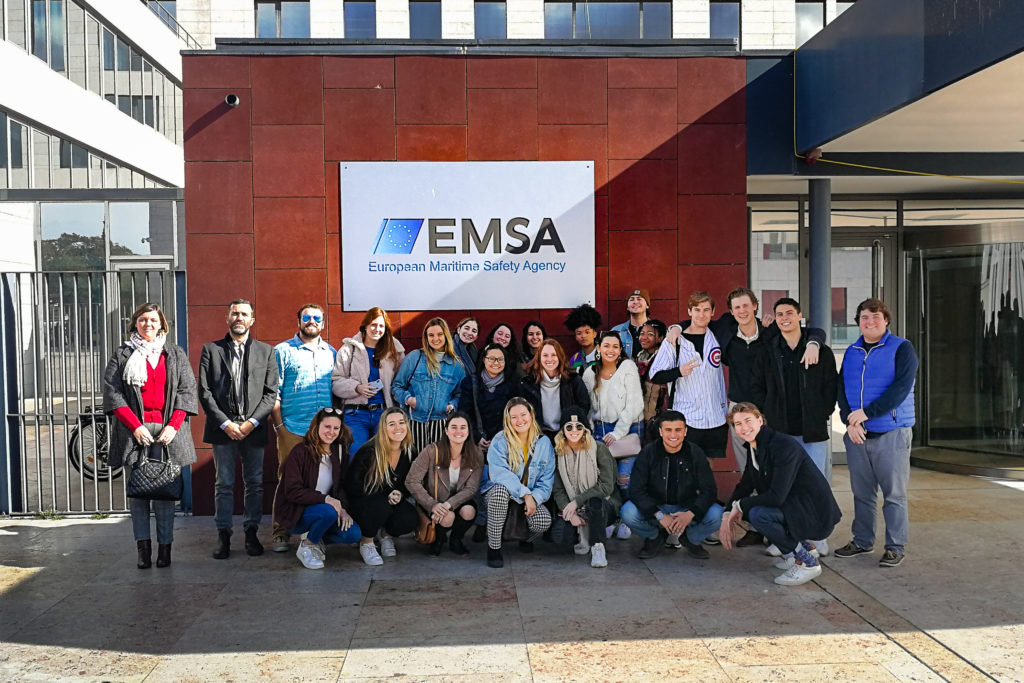
We learned about the organization and their role in regulating maritime transport in Europe through a short presentation from an EMSA representative. From the 270 representatives from 28 countries in the European Union, many are from Portugal and Italy. EMSA has been making maritime regulations since 2002 and has added two major revisions to their policies in response to human migration in the Mediterranean since 2013.
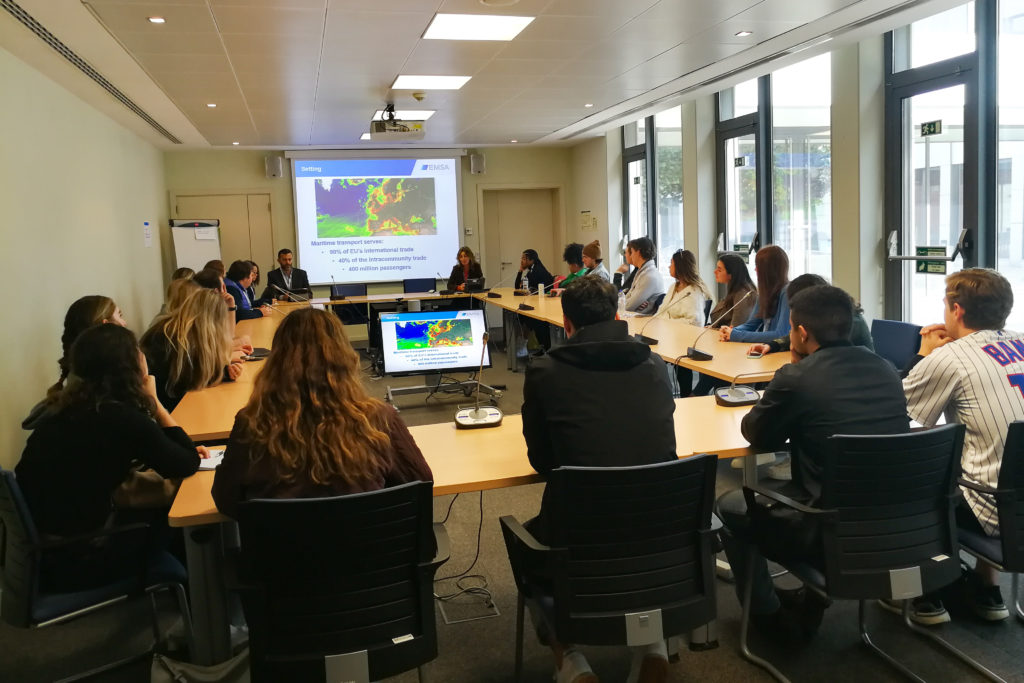
I was fascinated by all the expansive technology and protocols behind the scenes of maritime safety. In particular, I was intrigued at how EMSA monitors and communicates with ships through satellites and drones.
We asked a lot of questions during and after the lecture. Some of them were about EMSA’s domains in the international scene. EMSA is a broad organization that operates on the European level. We learned from the answer to a question about what EMSA can do about a region-specific issue, such as pollution from cruise ships in Venice, that it is up to each member state to handle local incidents.
I asked a question about EMSA’s involvement in cases of irregular migration aboard European ships. I learned that the organization investigates incidents that happen during maritime transport and works to determine the root causes and contributing factors behind the case. However, it is up to the member states to investigate serious incidents, such as deaths of migrants on ships. EMSA does keep records of incidents in state-by-state logs for its database, which can be accessed for legal cases in the future.
After the interesting presentation at EMSA, we headed to the local market and had an hour to explore by ourselves. I loved walking around the Time Out Market in central Lisbon. I couldn’t wait to try some Portuguese food for the first time!
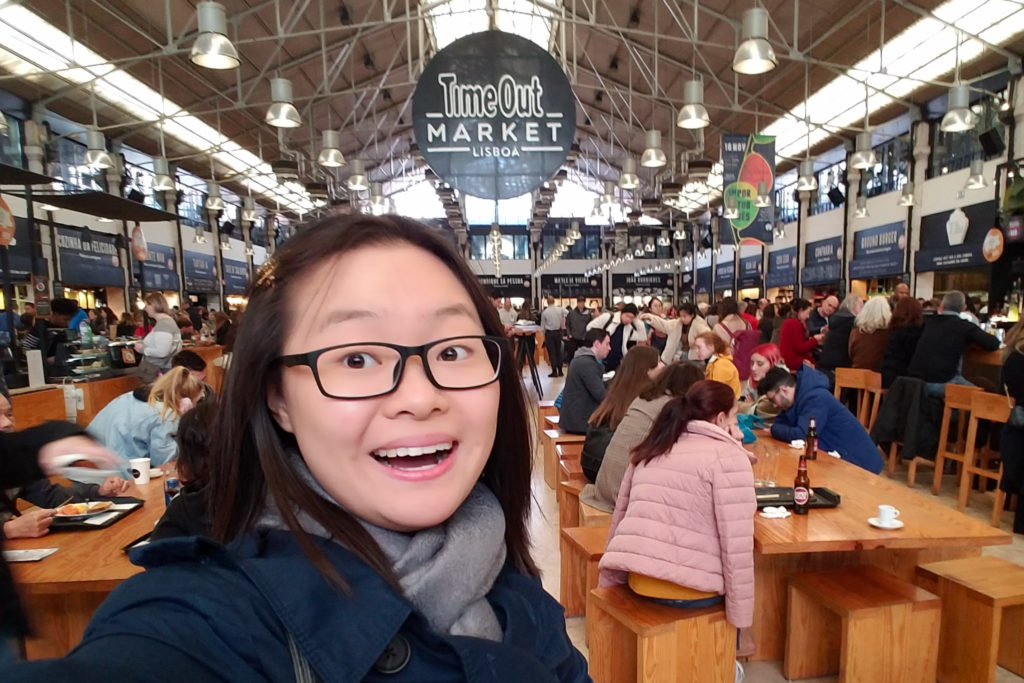 Excited to try some Portuguese food in the market!
Excited to try some Portuguese food in the market!
Seafood is a staple in Portuguese cuisine, and the Lisbon market was bustling with seafood chefs and customers. I saw trays and tanks of fresh fish and crustaceans on my stroll through the stands.
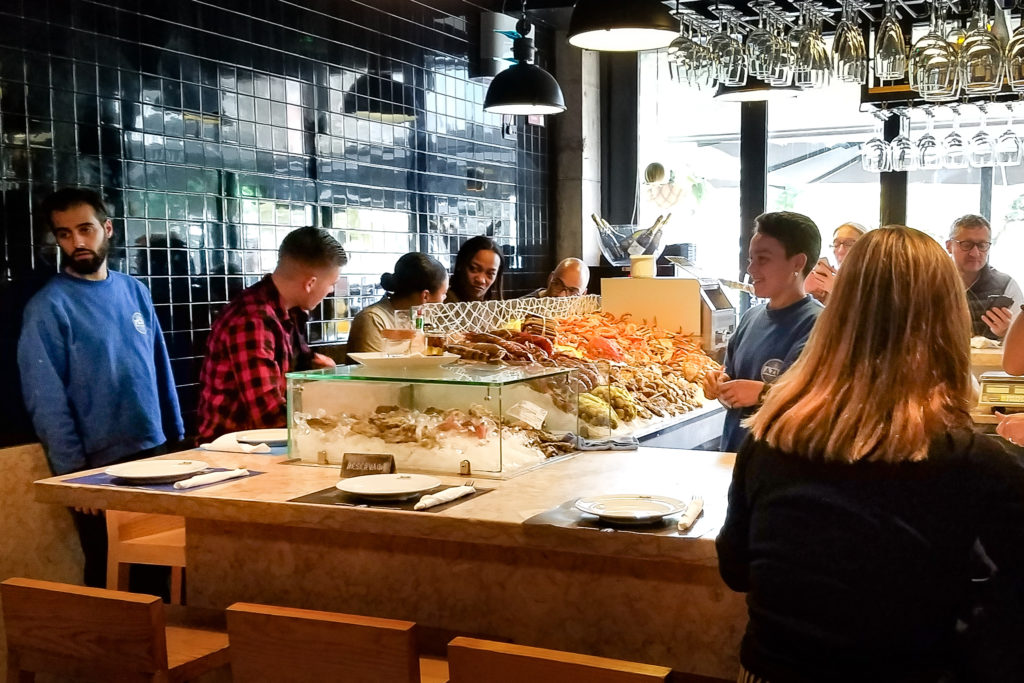
My friend and I decided to eat at a cleverly-named shop called “Sea Me at the Market,” where we ordered fresh seafood. I tried some cuttlefish with a twist: it was fried in black tempura! Quite different from the calamari I tried at the beach in Rome. I heard from my friend that the pan-seared tuna was very good as well. We shared some bacalhau (Portuguese for cod) in some savory fishcakes and enjoyed it with some tomato rice. Delicious!
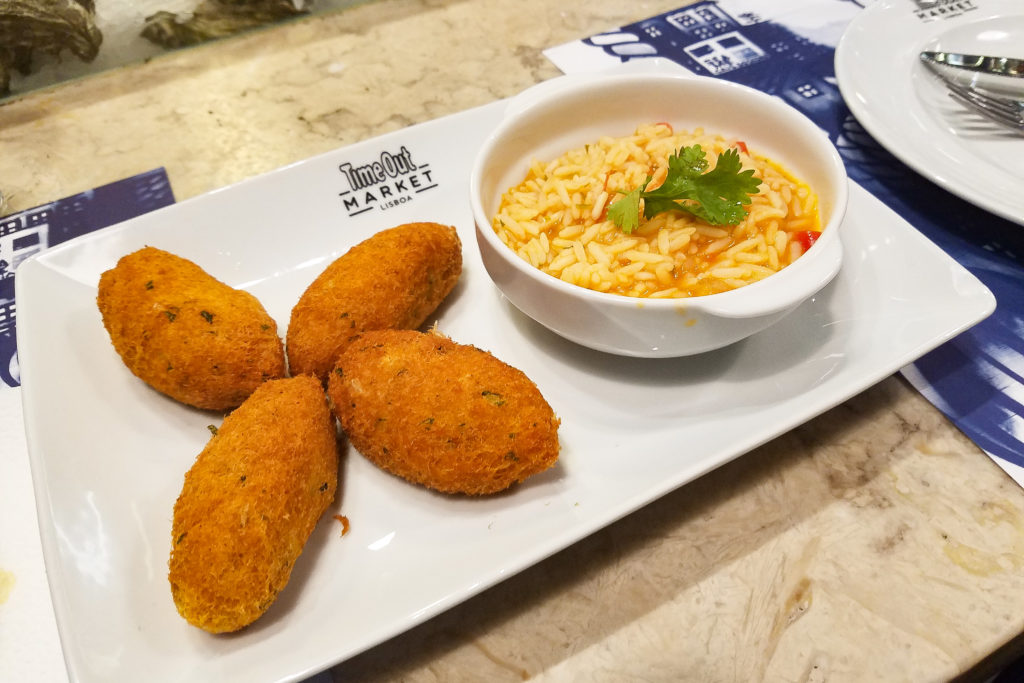
After lunch, we met outside the market and took the Metro to our next stop: the Centro Nacional de Apoio à Integração de Migrantes (CNAIM), or National Center of Aid and Integration of Migrants. I had seen the migrant center near Termini station in Rome on a previous trip for Immigration, Race, and Identity in Contemporary Italy, but I could tell that this center was going to be much different from the one in Rome.
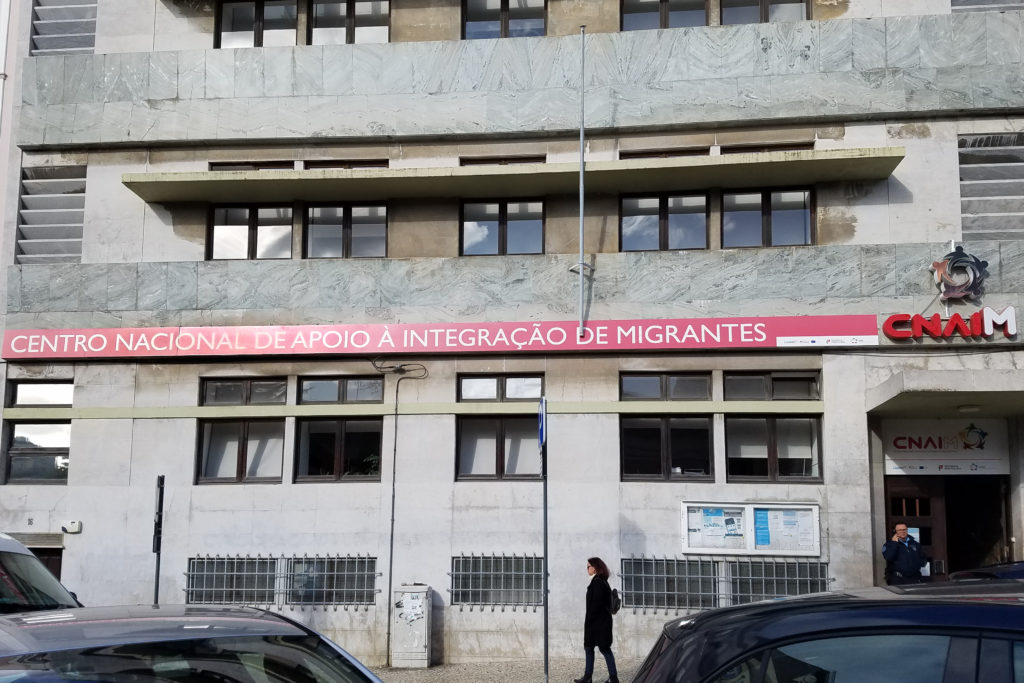
On our tour inside the building, we stopped by the gallery next to the first-floor waiting room. There were photographs of migrants from a camp in Greece displayed on the wall with powerful messages next to them. I found the placement of these two-dimensional black-and-white photos next to a waiting room full of three-dimensional people fascinating. I thought about the stories and message each migrant told through their photographs. I wonder what stories the migrants waiting just outside have to tell, and how they might feel about the messages in the gallery.
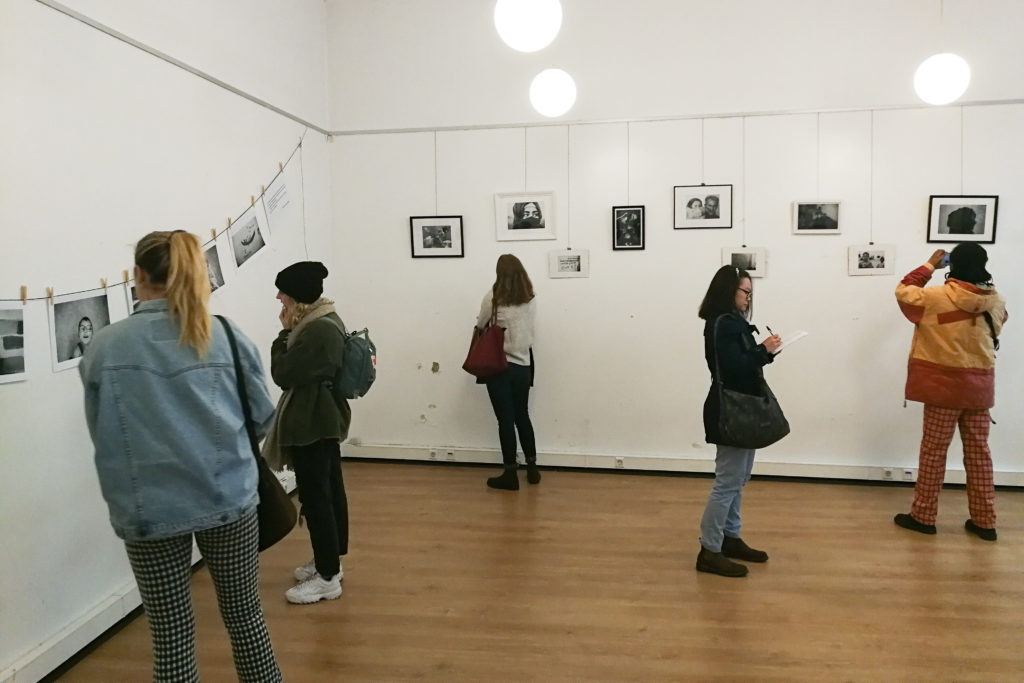
We learned from our guide that CNAIM has been providing a variety of services to migrants of all backgrounds and legal statuses since 2004. 75% of its funding comes from other places in Europe while the remaining 25% comes from the Portuguese government. The center in Lisbon is the largest one in the country, bigger than the other two in Portugal. The organization offers answers to necessary questions about the integration process and has partnerships with other entities, including over 100 other centers in different municipalities.
CNAIM offers its services in 15 different languages on site and has access to a support in 60 languages through the telephone support line. There is also a small kindergarten near the first-floor waiting room, where the children of migrants going through the immigration process in the center can learn and play as their parents are in meetings with staff. With so much in one center, I was not surprised to learn that CNAIM has won many awards for what they do.
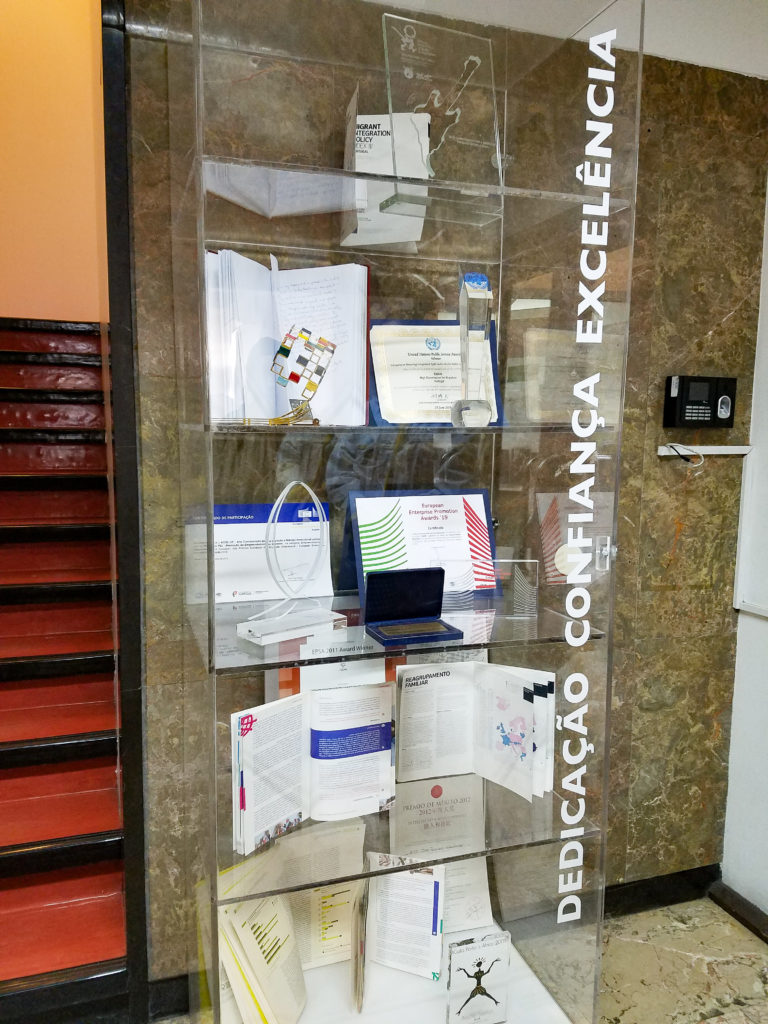
On our way upstairs, we walked past the health office, the board of immigration services, the family reunification services, the social security office, the ministry of justice, the education office, and the legal support office. Each office provides general information to migrants who need guidance and referrals to other centers for their cases.
In addition to the row of offices, there is also a mentoring program at the center, where over 1000 Portuguese citizens volunteer to mentor migrants one-on-one based on specific needs and skillsets. CNAIM is partnered with 60 other programs and has a 10-session entrepreneurship class that teaches and advises migrants who want to start businesses in Portugal. The program aims to promote networking and workshops with Portuguese professionals and encourages former trainees to share their knowledge with migrants currently in the classes.
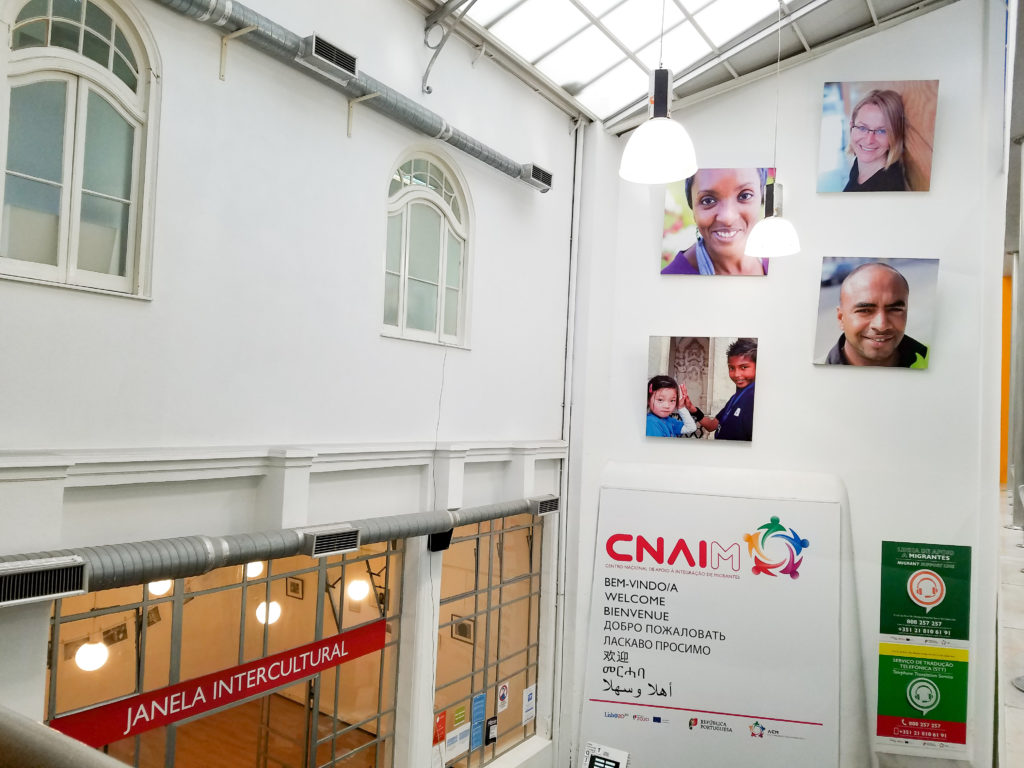
After learning about all the services CNAIM offers migrants, we headed into a separate hall for a Q&A session. On our way there, I couldn’t help but think about the migrant center in Rome when I walked past a mural of a woman reading a book. It reminded me of the painting of an African woman facing Dante, the father of Italian literature, that I saw near Termini. The image represents a migrant working toward integration into society, and this is the message I got from the mural at CNAIM.
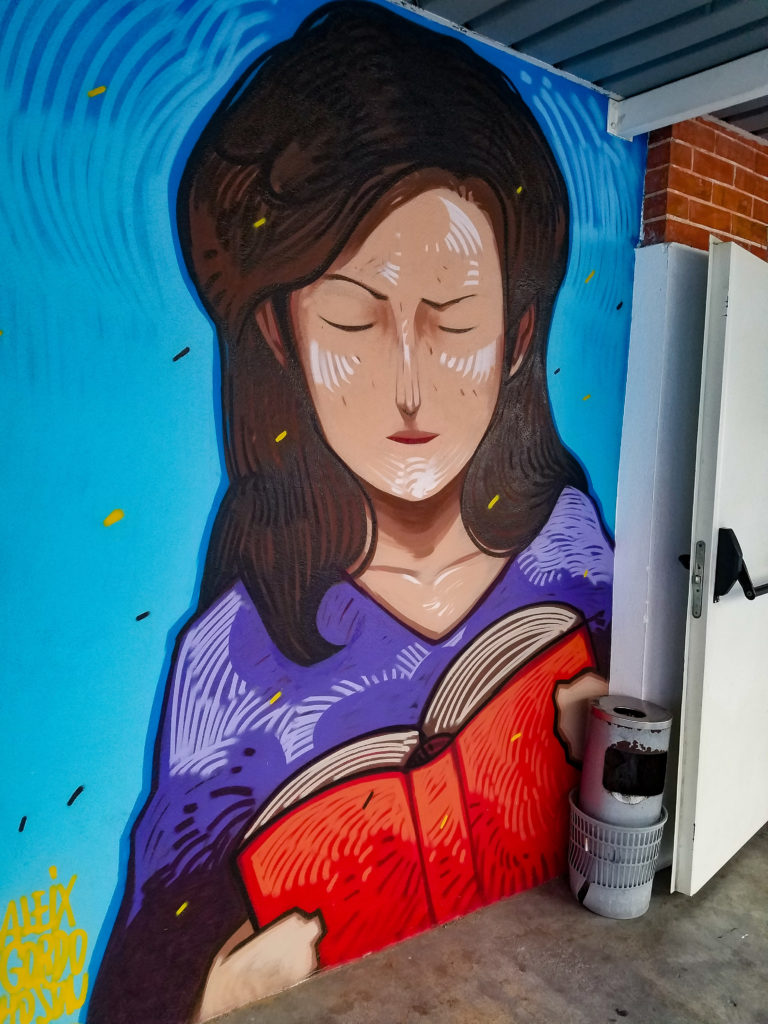
During the Q&A session, my classmates asked a lot of questions and learned a lot from the answers. I was happy to hear that there was no political backlash against CNAIM when it opened, and the Lisbon community is accepting of the center and the migrants it helps. I also learned that many new arrivals in the country first learn about CNAIM and its services through other migrants. The center opens at 8:00 a.m., but there are people waiting outside the door since midnight for CNAIM’s services.
I learned a bit about Portuguese citizenship as well. I was surprised to hear that there are no questions about the history or government of Portugal on the citizenship test: there is only a language section. As a naturalized US citizen, I couldn’t imagine a citizenship test without a question about the branches of government or years of a specific war.
Unlike American citizenship, Portuguese citizenship works under ius sanguinis, which is Latin for “right of blood.” People who are descended from Portuguese citizens are Portuguese by law. The United States works under ius soli, “right of soil,” which grants American citizenship to anyone born in the country.

Our last stop after our visit to CNAIM was the School of Law at the University of Lisbon, a public research university in the city and the largest in the country. It rained a bit after we walked out of the Metro station near the university. We did see a rainbow afterward, and I took it as a sign of a good visit ahead.
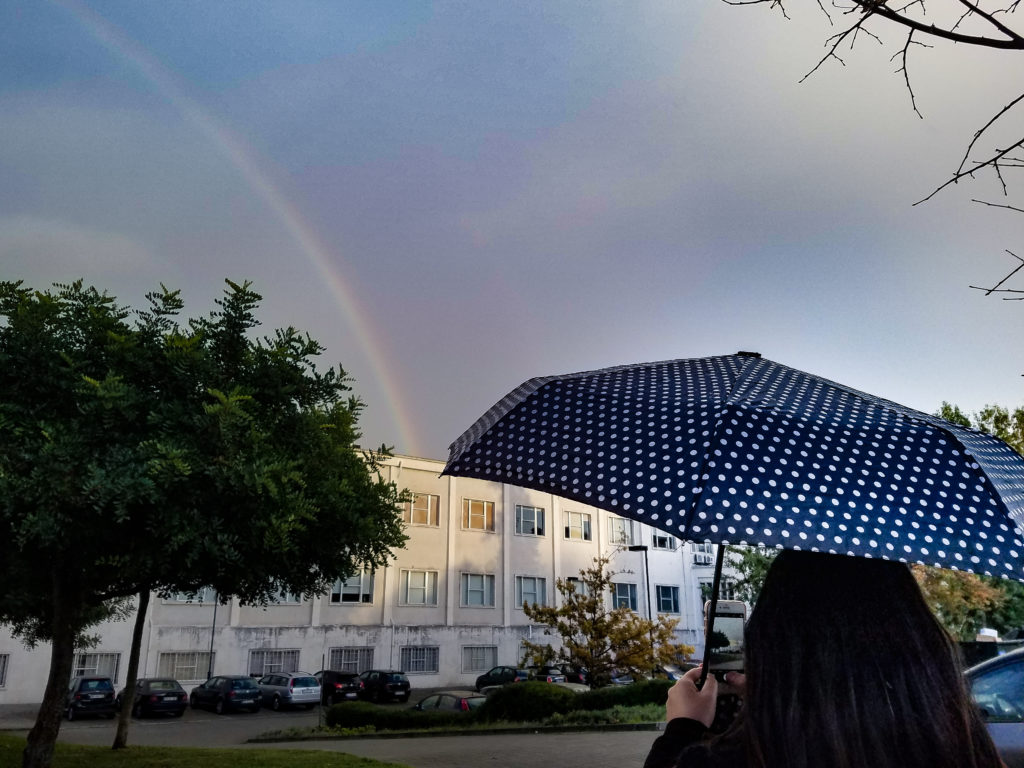
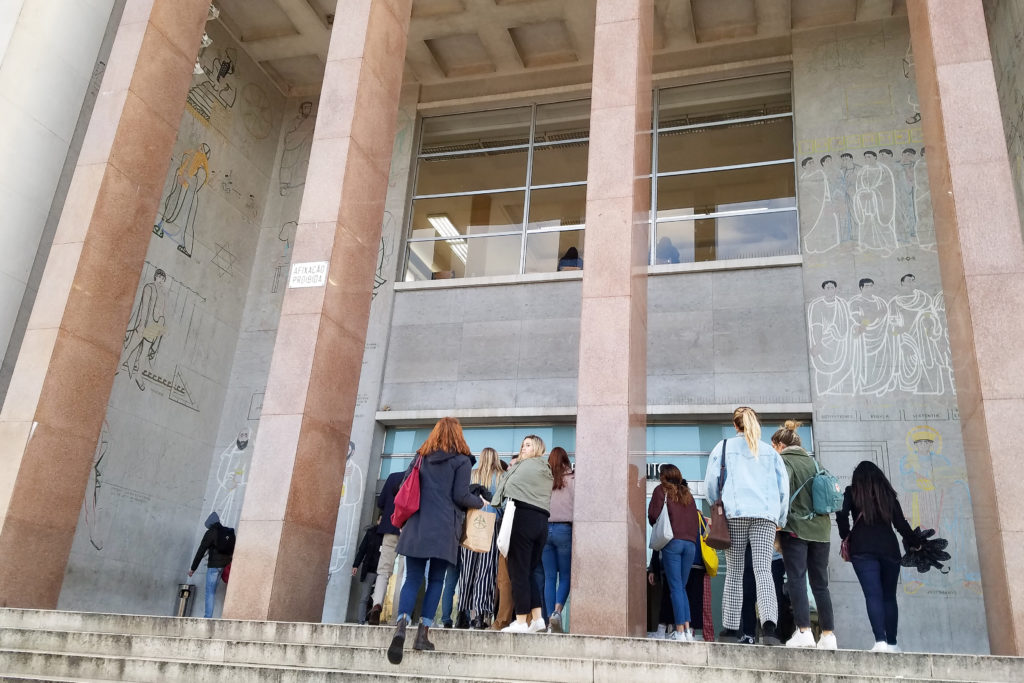
We went on a short tour inside the school. The University of Lisbon was founded in 1911 and holds over 100 years of history. We walked through its historic lecture rooms and its huge faculty room, which has paintings of faculty on its walls.
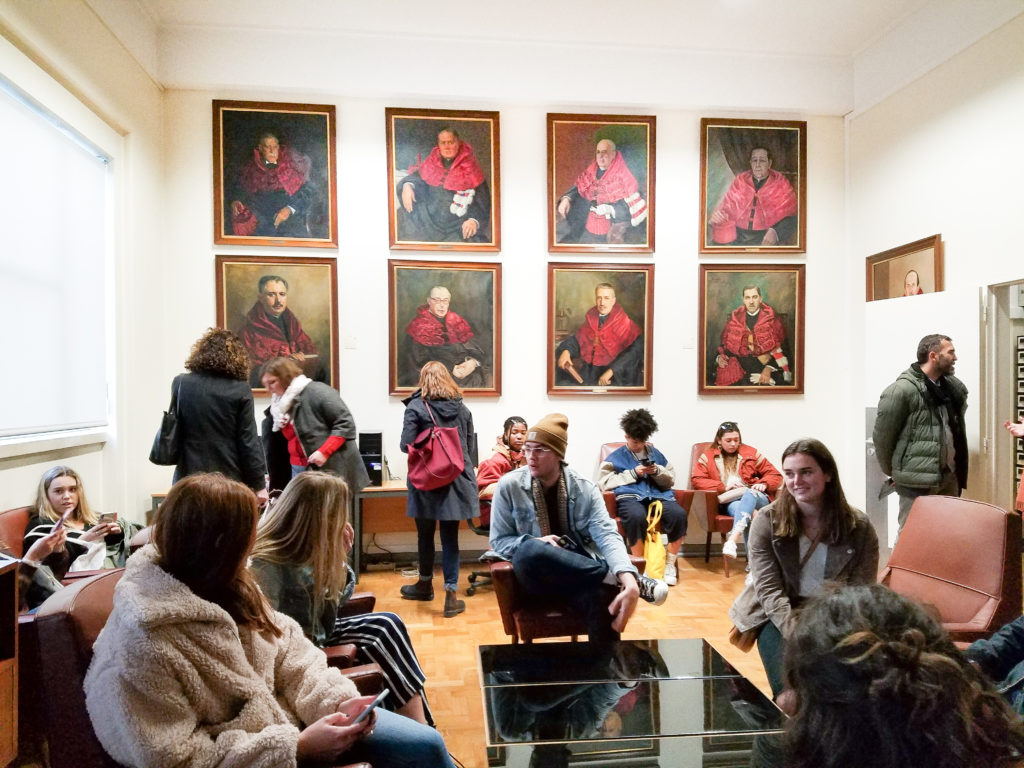
We finished our visit with a special lecture from Professor Nuno Cunha Rodrigues, a friend of Professor Rinelli’s. He spoke about how Portugal is different from other countries in Europe. There are fewer political parties in Portugal, and none of them can be considered “extreme.” The country is also geographically removed from issues that other European nations are addressing in the political scene. There are also no regions and only one dialect of Portuguese in the entire country.
Before our trip, I remember how Professor Rinelli mentioned that Portugal was a “political exception.” I heard in the Q&A session at CNAIM that Portugal is not a racist country, and Professor Rodrigues’ lecture about Portuguese history helped me understand why this is the case. Portugal was, in his words, “traumatized” by a brutal dictatorship and a horrible war that was claimed more Portuguese lives than the Vietnam was did American soldiers. Younger Portuguese citizens fled during this period in the mid-20th century, and since then, the country has been more open to foreigners.
I was intrigued by the lecture. In high school, I only learned about Portugal in the context of the 15th and 16th centuries, when Spain and Portugal split the “New World” along a vertical line on the map. I don’t remember learning much about Portugal outside of the Age of Discovery, the Spice Trade and a little bit from the Scramble for Africa. This was my chance to learn more about the history of Portugal.
Through my questions at the end of the lecture, I learned that Portugal was actually on the same side as the US during World War I! It must have been a lot, since Portugal had an unstable government for almost two decades after its monarchy was abolished in 1910.
Portugal was also one of the only countries that remained neutral and was relatively unaffected by World War II. During the Cold War, Portugal was allied with the US it was isolated from the situation because of a war with Angola, which was a Portuguese colony fighting for its independence at the time. There was also a military revolution in the 1970’s that overthrew a dictatorship that had been in place since the 1930’s. I was in awe of how a brutal dictatorship ended so peacefully with the nonviolent Carnation Revolution.

In closing, Professor Rodrigues stated that Portugal is a country with over 800 years of history and has some of the most stable borders in the world. Its people are unified under a strong national identity. You don’t learn about that in a high-school European history class! I’m glad I got to learn a lot of new things from our visit.
After the lecture at the university, we went to explore the city by ourselves. My friend and I headed downtown to look at some restaurants. We settled for a small spot near the theaters of the city. We shared a plate of sauteed prawns with the heads and shells still on. I’m glad I got to eat some fresh prawns before I left Portugal! I was curious about them at the market.
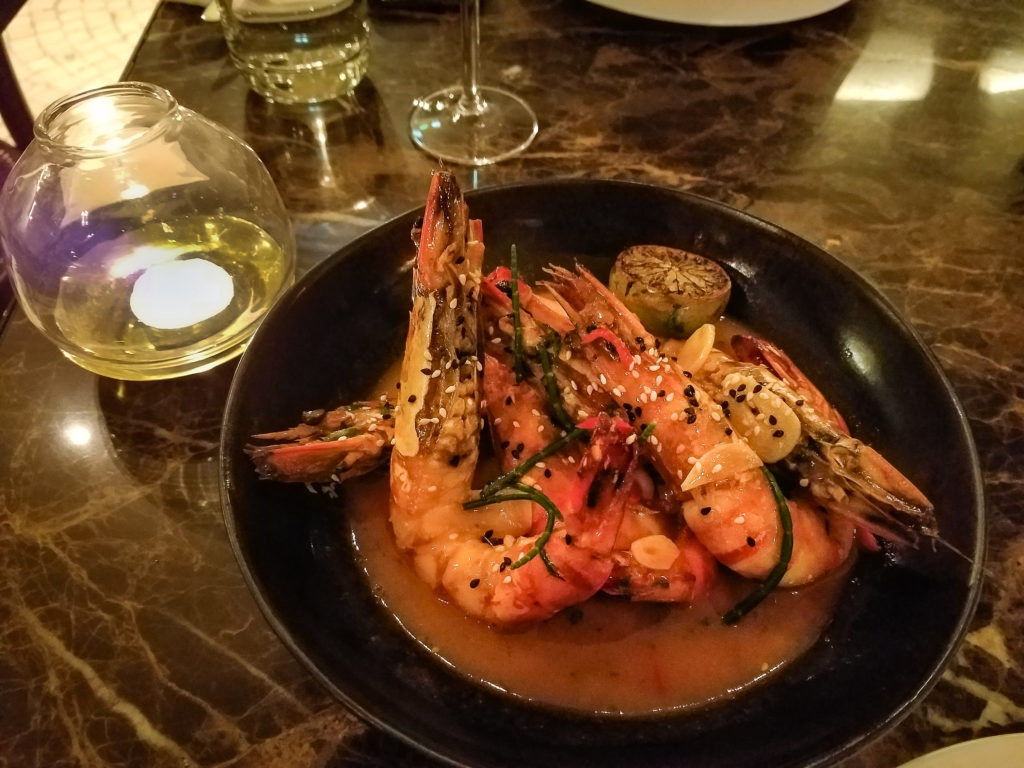

We took a taxi back to our hotel and fell asleep quickly after our busy day in Lisbon. I couldn’t believe I experienced that much in just one day!
You would think that after doing so much in one day, that would already make for a pretty full trip. But wait, there’s Moor!
The next morning, we learned about the multicultural history of Lisbon, starting with the influence of the Moors from North Africa. We met José Linu, our guide from the Batoto Yetu Association, an organization that promotes traditional dances from Africa and leads post-colonial tours of Lisbon, at the Igreja de São Domingos.
I first learned about the Moors in my high-school European history class. They were Muslims from North Africa who settled in the Iberan peninsula in the 8th century. I remember reading about how the Spanish Inquisition drove them out of the area in the 13th century.
At the beginning of our tour, we learned about the African influence in Lisbon. The very square we were standing in was a major meeting place for Africans in Portugal. The church itself was an important religious location for Africans who were freed from slavery, and they referenced African saints in the regions. The priests there were of African descent as well.
The church survived two earthquakes and a fire between the 14th and 17th centuries. It was almost completely destroyed by the natural disasters, and there are still signs of the destruction inside.
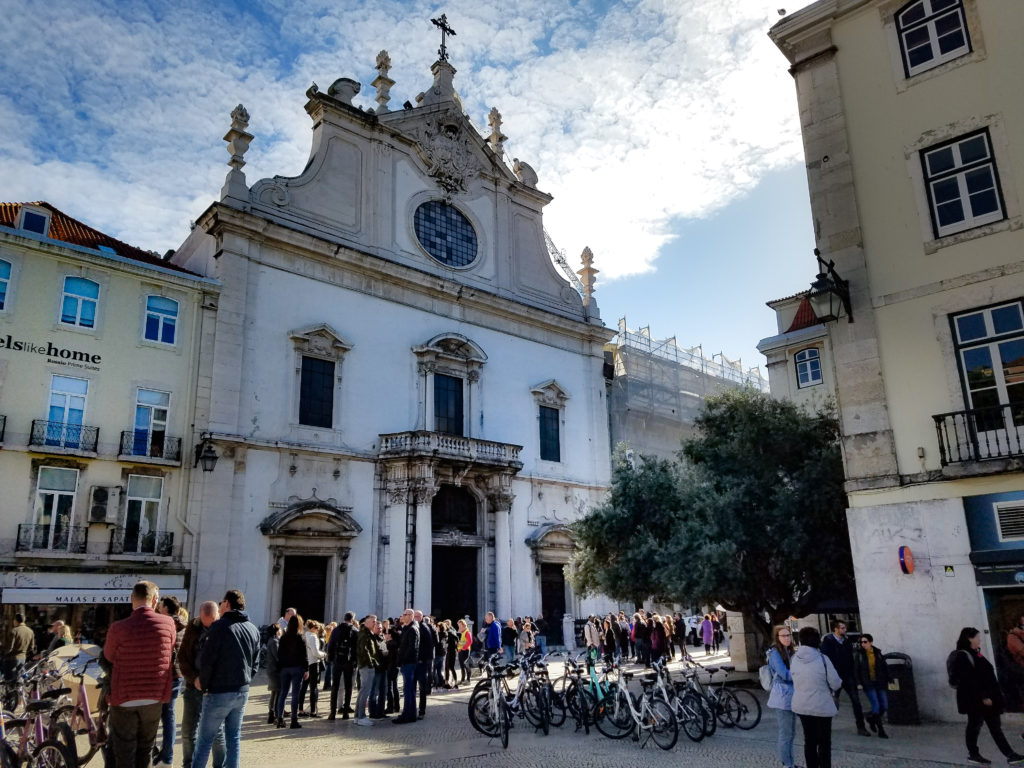
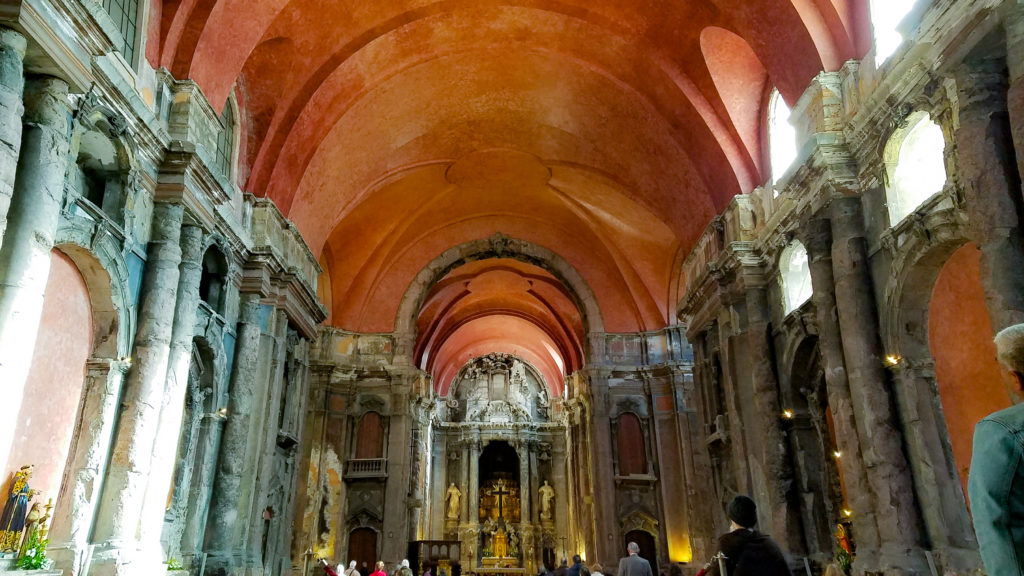
José gave us some ginger candy as a little pick-me-up on our tour. He said that, according to African tradition, there was magic in ginger candy. I was more than happy to take a few pieces: I grew up eating ginger candy in the United States, and according to Chinese tradition, ginger has multiple medical benefits on the body.
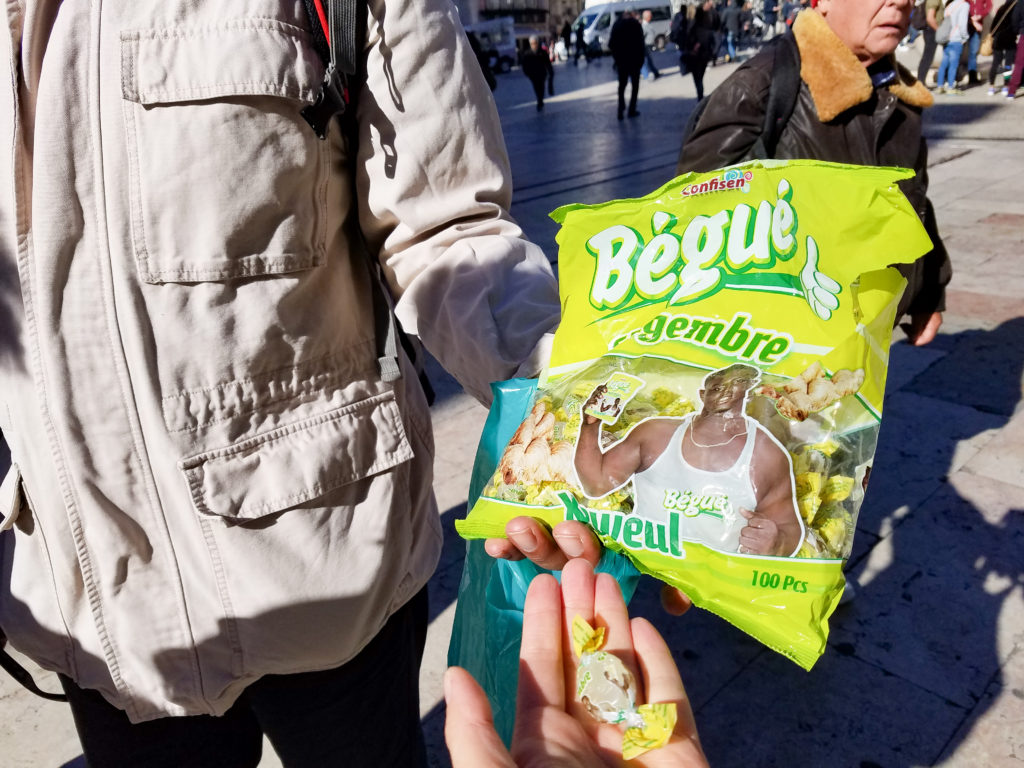
José told us about the cultural importance of Fado, a genre of music that originated in Lisbon. Fado is similar to the Blues in the United States, in that it is known for its melancholic tones. Homesickness is a major theme in Fado music. He said that Fado has influences from African dance, beginning as a lively dance performed in the streets of Lisbon. We saw artwork relating to Fado and the multiculturalism of Lisbon in the historic Moor area of the city which is known for its tunnels and stairs.
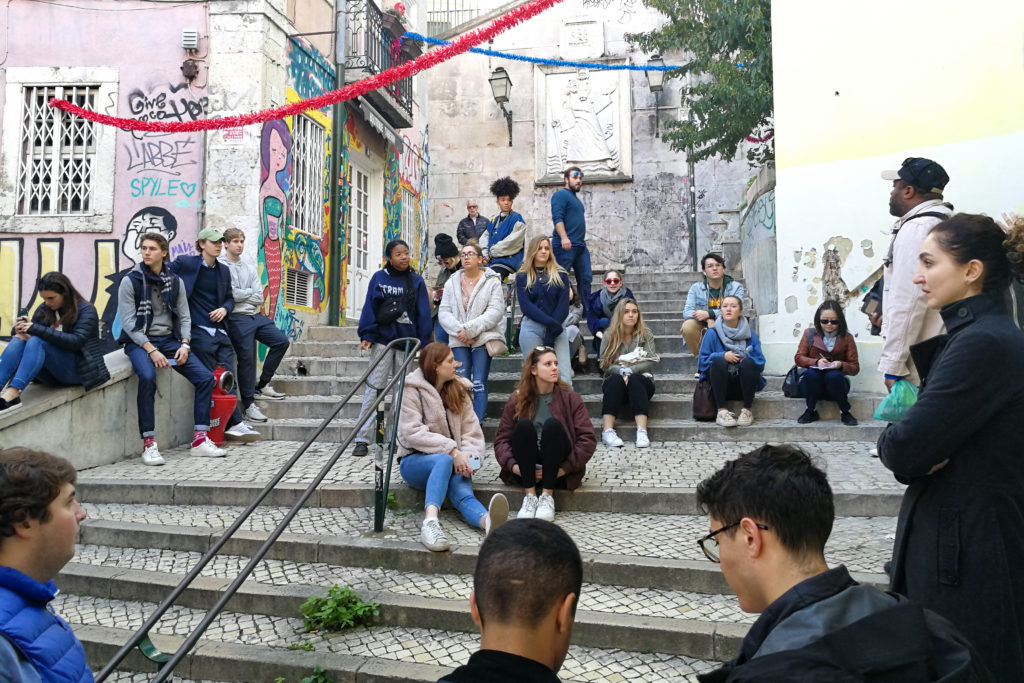
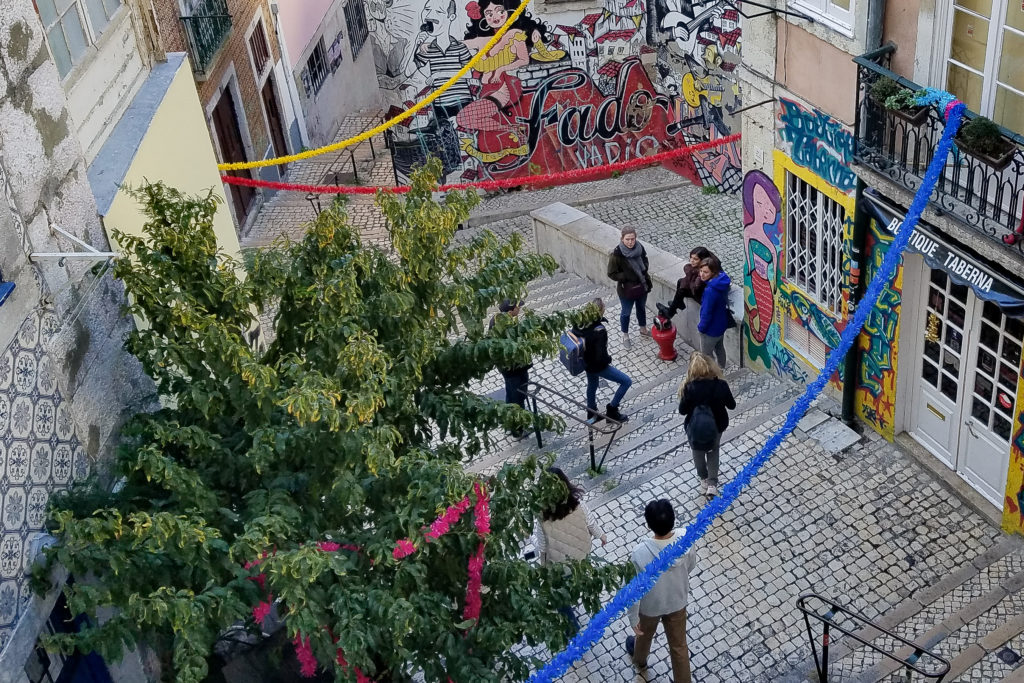
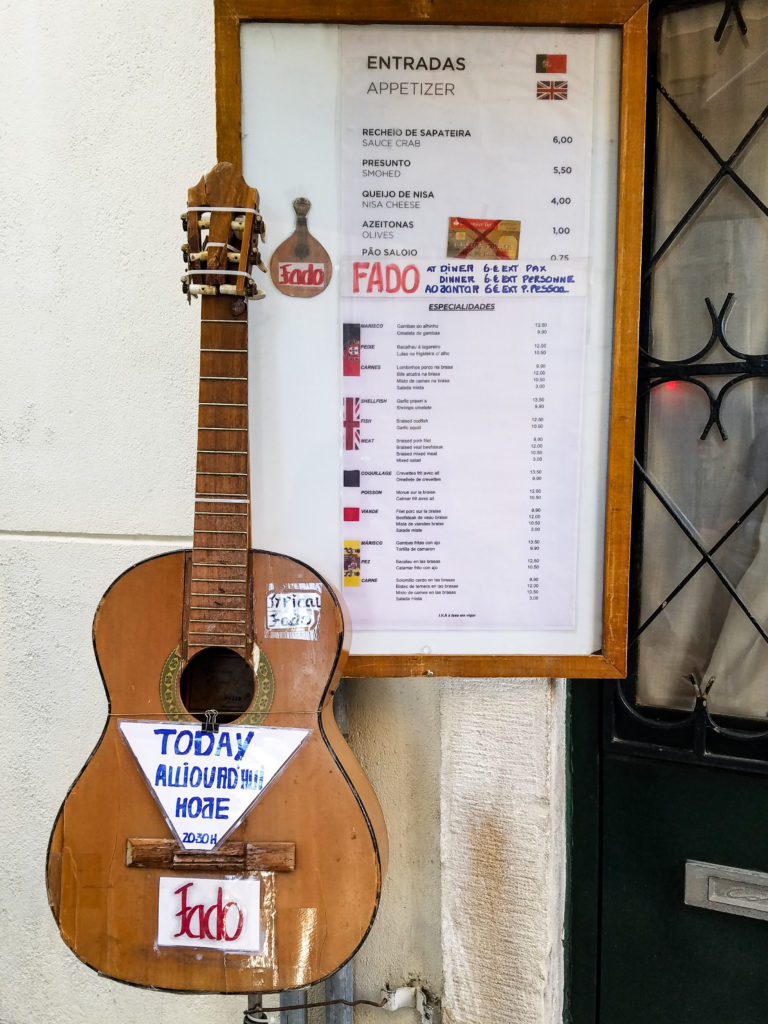
This part of the city has seen a lot of cultural exchange throughout history, and it was here that some Portuguese nobles from the upper end of society mixed with the locals who performed Fado dance and music outdoors. Eventually, Fado was brought from the streets into salons and the music lost its lively percussion. José told us that it is important not only to promote new artistic-cultural movements, but also to remember the roots of cultural gems such as Fado.

Further along in our tour, we stopped by a long street teeming with customers from multicultural shops. We saw one of the older buildings from the center, which survived the earthquake of 1755. Some people called the event a “punishment for Fado.” I would call it a natural disaster completely unrelated to human activity.
We learned about the colonial history of Portugal. There are streets named after former colonies. José, who works at the migration center in Lisbon alongside his job promoting African traditions and leading colonial tours with the Batoto Yetu Association, said that he is working on education people about the often-overlooked history of the country. It is important to remember the past of a place, even if it is not very well known.
We finished our tour with a walk in the park and a group photo in front of the School of Medicine of the University of Lisbon. We stood in front of the statue of José Tomás de Sousa Martins, a doctor who treated and helped find medical aid for the lower-class people of the city. Our tour guide José mentioned that he was from African descent and hailed as a hero, with people still leaving gifts and tokens of appreciation at the base of the statue today.
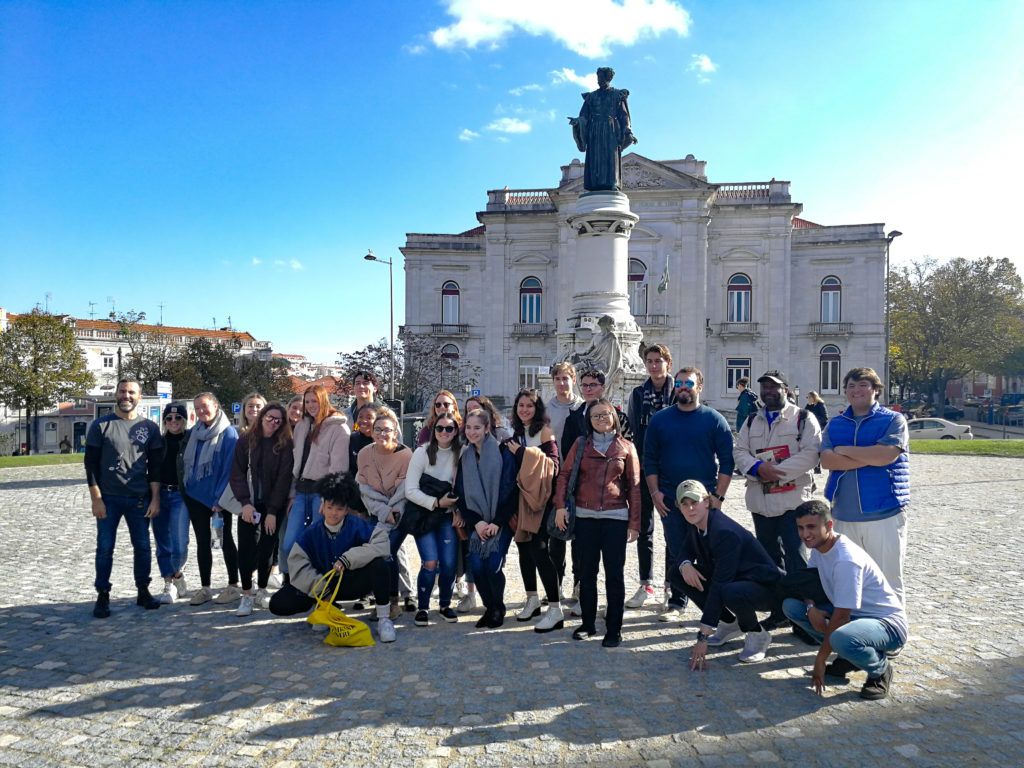 What better place to end our tour in front of a statue after a walk in the park?
What better place to end our tour in front of a statue after a walk in the park?
After we thanked José for the tour, we had some free time to explore the city before our flight back to Rome. I decided to take the Metro to the Amoreiras Shopping Center to buy some gifts. The place looked like a skyscraper, and I was excited to find out that I can get a panoramic view of the entire city from the rooftop! I bought some handbags for my friends and family (and a cute hat for myself), had some fresh tuna (can’t leave Portugal without trying some!), and bought a ticket to the rooftop. What a view, from the highest point in Lisbon!
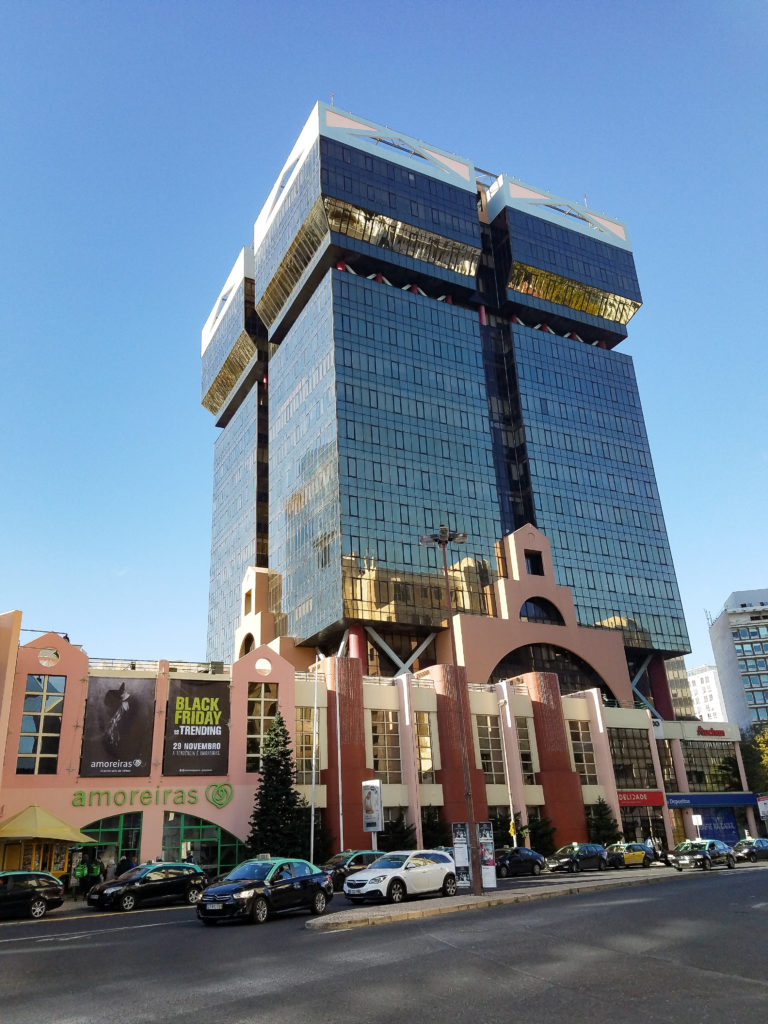


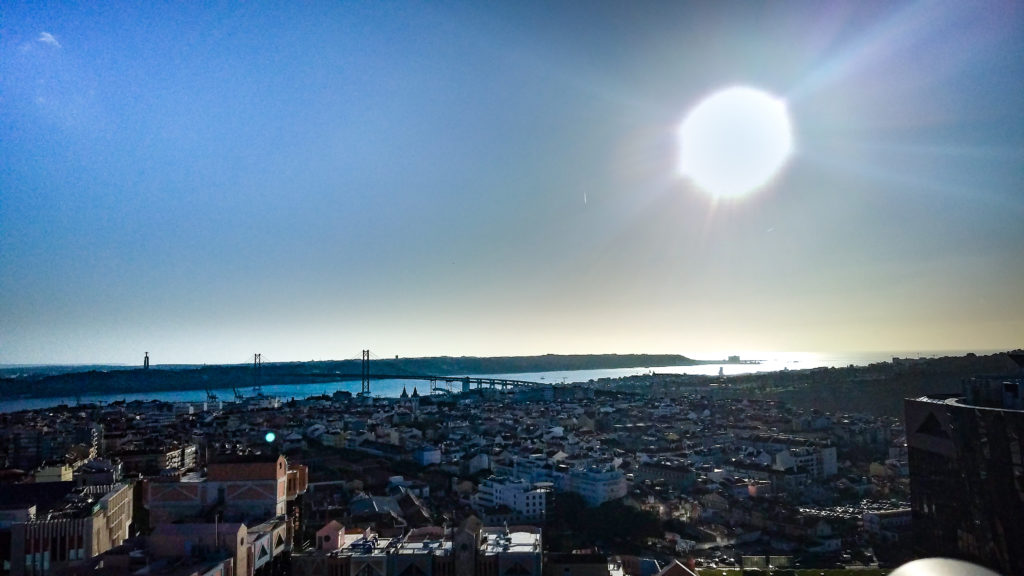
I left the shopping center very happy with my trip to Lisbon. I was thinking about everything I learned on the plane ride back to Rome. I’m glad I had the chance to study abroad not only in Rome, but also briefly in Lisbon as part of this academic excursion. This is not an opportunity I’ve ever had before, and the unique experience has made my semester abroad even more special and memorable.
